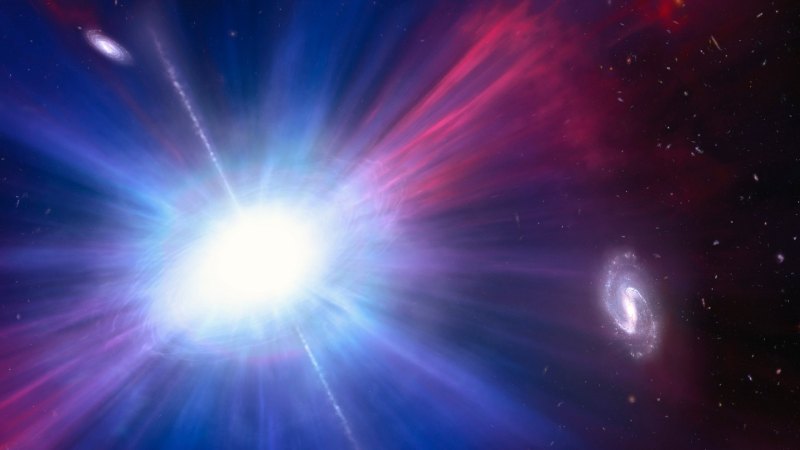NATIONAL HARBOR, MD. — A bright blip in a distant galaxy may link two mysterious categories of cosmic flares. The event, which astronomers playfully call the Platypus, could also offer a new way to understand the origins of supermassive black holes that reside at the centers of most galaxies.
The brilliant burst, spotted in a dwarf galaxy about 6.5 billion light-years from Earth, has many of the hallmarks of a tidal disruption event, the final flash of a star being ripped apart by a black hole. But it also resembles another type of flash, dubbed an LFBOT, which astronomers think might be a class of exploding star.
The Platypus could connect the two, astronomer Vikram Ravi of Caltech reported January 15 at a meeting of the American Astronomical Society.
Ravi and colleagues weren’t looking for LFBOTs, or luminous fast-blue optical transients. Instead, the team sought tidal disruption events around intermediate-mass black holes, with masses a few thousand times that of the sun.
“These are the progenitors, or the seeds, of supermassive black holes,” which can be billions of solar masses, says study coauthor Jean Somalwar, an astrophysicist also at Caltech. Understanding these elusive beasts can illuminate how supermassive black holes formed.
Using the Palomar Observatory near San Diego, the team found one promising flare in July. Follow-up observations with the Hubble Space Telescope showed that the blast came from the outskirts of a tiny galaxy. The blast’s brightness was 100 times that of all the stars in that galaxy.
“It’s just a remarkably bright source, brighter than really almost anything we’ve seen before,” Somalwar says.
The burst might come from an extremely massive star “doing some crazy explosion,” Somalwar says. The other suspect is a supermassive black hole shredding a star. But a galaxy that small probably lacks both. “We think an intermediate-mass black hole is a really good candidate,” she says.
The Platypus also looked like an LFBOT: It shone intensely in blue light, and it rose quickly in brightness. But whereas the brightness of most LFBOTs evolves over a few days, the Platypus glowed for two weeks — more like a tidal disruption event.
The team hopes to get simultaneous observations with Hubble and the James Webb Space Telescope in the next month, which could help clarify the Platypus’s origins. And the upcoming Vera Rubin Observatory in Chile should find hundreds more Platypus-like events, if there are more to be found.


